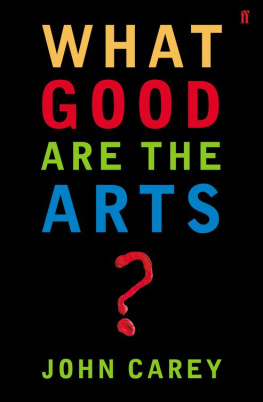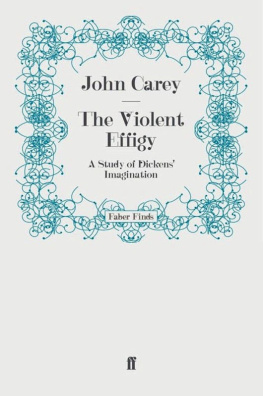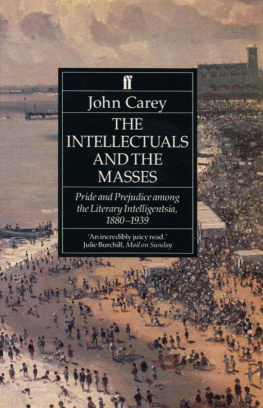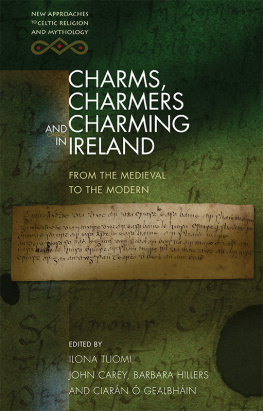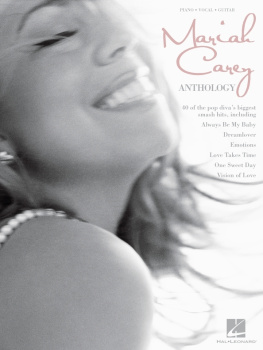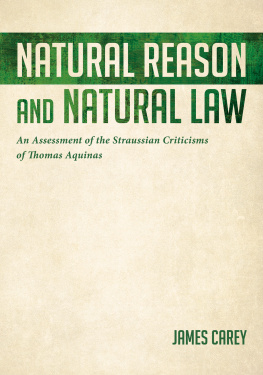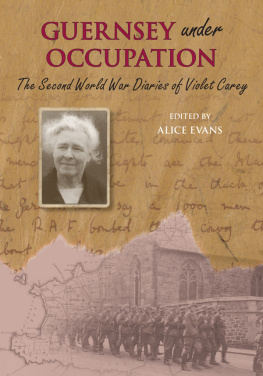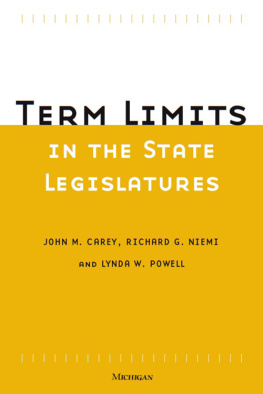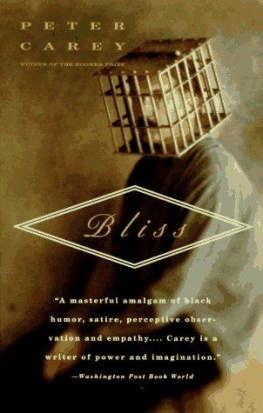John Carey - What Good are the Arts?
Here you can read online John Carey - What Good are the Arts? full text of the book (entire story) in english for free. Download pdf and epub, get meaning, cover and reviews about this ebook. year: 2012, publisher: Faber & Faber, genre: Art. Description of the work, (preface) as well as reviews are available. Best literature library LitArk.com created for fans of good reading and offers a wide selection of genres:
Romance novel
Science fiction
Adventure
Detective
Science
History
Home and family
Prose
Art
Politics
Computer
Non-fiction
Religion
Business
Children
Humor
Choose a favorite category and find really read worthwhile books. Enjoy immersion in the world of imagination, feel the emotions of the characters or learn something new for yourself, make an fascinating discovery.
- Book:What Good are the Arts?
- Author:
- Publisher:Faber & Faber
- Genre:
- Year:2012
- Rating:5 / 5
- Favourites:Add to favourites
- Your mark:
- 100
- 1
- 2
- 3
- 4
- 5
What Good are the Arts?: summary, description and annotation
We offer to read an annotation, description, summary or preface (depends on what the author of the book "What Good are the Arts?" wrote himself). If you haven't found the necessary information about the book — write in the comments, we will try to find it.
What Good are the Arts? — read online for free the complete book (whole text) full work
Below is the text of the book, divided by pages. System saving the place of the last page read, allows you to conveniently read the book "What Good are the Arts?" online for free, without having to search again every time where you left off. Put a bookmark, and you can go to the page where you finished reading at any time.
Font size:
Interval:
Bookmark:

Further praise for What Good are the Arts?:
Wrong-headed, self-contradictory and brilliant. John Banville, Guardian
Anyone who still insists on lecturing us about high culture and its superiority to mass culture should be made to read John Careys What Good Are the Arts? ideally as the educational component of a whole range of corrective measures, some of which would be much more painful. Carey (who wrote the equally brilliant and valuable The Intellectuals & the Masses: Pride & Prejudice Among the Literary Intelligentsia, 1880-1939) defines art, tells us what its good for and has enormous fun dismantling the claims of aesthetic theorists, from Kant onward. Its been a long time since Ive read a saner book. Nick Hornby
Blows the gaff on a lot of the received wisdom behind our culture. Joan Bakewell
Brilliant Exhilarating and suggestive. Rupert Christiansen, Spectator
Please everyone read John Careys iconoclastic What Good Are The Arts? pricking the most pompous of balloons. Simon Jenkins, New Statesman (Books of the Year)
My favourite book. Julie Burchill, Independent on Sunday (Books of the Year)
[A] scorching polemic. Richard Eyre
Full of insight I like [Careys] personality, his frankness, and his great sense of humour. Xinran Xue, author of Sky Burial
An early version of the first part of this book was given as the Northcliffe Lectures at University College London in the spring of 2004. I am grateful to Professor John Sutherland for inviting me, and to him, Professor Danny Karlin, Dr Helen Hackett, and the other faculty members and their students for their enthusiastic welcome.
People whose writing or conversation has helped me are too numerous to list, but I should like to thank, in particular, Dinah Birch, Robert Ferguson, Peter Kemp, rka Khnov and Adam Phillips for their ideas and encouragement. I have been lucky to be able to draw on such minds. Julian Loose of Faber suggested the title over lunch some five years ago, before a word of the book was written, and he has been a model of patient forbearance ever since.
For discussions of the potential of Magnetic Resonance Imaging for aesthetic enquiry I am indebted to Dr Joe Devlin at the John Radcliffe Hospital, Oxford, and Professor Matthew Lamdon Ralph of the University of Manchester. I greatly appreciated their friendly care in making themselves intelligible to a layman.
Julia Adamson and Lore Windemuth of the BBC forced me to clarify some of my ideas while we were making the mini-series Mind Reading, broadcast on Radio 4 in November December 2004, and the book has benefited.
During my years of preparatory reading, my son Leo Carey helpfully alerted me to every relevant American publication that came across his desk at The New Yorker. It made the hours spent in libraries seem much less lonely. So did the ceaseless interest and attention of my wife, Gill, who read and criticized the book in draft.
People in the West have been saying extravagant things about the arts for two and a half centuries. The arts, it is claimed, are sacred, they unite us with the Supreme Being, they are the visible appearance of Gods kingdom on earth, they breathe spiritual dispositions into us, they inspire love in the highest part of the soul, they have a higher reality and more veritable existence than ordinary life, they express the eternal and infinite , and they reveal the innermost nature of the world. This random clutch of tributes reflects the views of authorities ranging chronologically from the German idealist philosopher Georg Wilhelm Hegel to the contemporary American critic Geoffrey Hartman, and they could be multiplied ad infinitum.
Even those who would hesitate to classify the arts as holy often feel that they form a kind of sanctified enclave from which certain contaminating influences should be excluded notably money and sex. The Australian critic Robert Hughes voices a general disquiet when he says that the idea of a Van Gogh landscape , the anguished testament of an artist maddened by inequality and social injustice, hanging in a millionaires drawing room, is difficult to contemplate without nausea. For many, the pleasure of walking round a great public art collection is enhanced by the thought that they are in a space where the laws of economics seem to be magically suspended, since the treasures on display are beyond the dreams of private avarice.
That true art should banish thoughts of sexual arousal, as well as of commerce, has been a rule ever since our ideas about art started to be formulated in the 18th century. Currently the Internet is most commonly used as a supplier of pornographic images, which must mean that they are the most sought-after art objects in our world. However, we strictly exclude them from the category of true art, and, in the case of child pornography , criminalize them. We have revived the practice of sending people to prison for looking at the wrong kind of pictures, which had fallen into abeyance since the iconoclastic frenzies of the Protestant reformation, when you could be imprisoned, or even done to death, for possessing pictures of Christ or the Virgin Mary.
The arts have traditionally excluded certain kinds of people as well as certain kinds of experience. Writers on the arts have emphasized that their spiritual benefits, though highly desirable , are not available to everyone. The most excellent works of every art, the most noble productions of genius, Schopenhauer admonishes, must always remain sealed books to the dull majority of men, inaccessible to them, separated from them by a wide gulf, just as the society of princes is inaccessible to the common people. For some art-enthusiasts, indeed, it is this very exclusiveness that makes the arts attractive. Equality is slavery, writes the French novelist Gustave Flaubert, That is why I love art. A common 20th-century lament was that universal education had produced a semi-literate horde, insensible to the values of genuine culture, as the avant-garde American art-critic Clement Greenberg put it, whose vulgar clamour for the degraded kinds of art they could appreciate polluted the aesthetic atmosphere.
Quite what sort of spiritual influence genuine art should impart when operating correctly on the correct sort of person remains, however, largely unexamined. It is often said, by art-lovers , that art-lovers have more refined sensibilities than others . But this is a difficult thing to measure. Whereas there are tests for assessing intelligence, no objective computation of refinement is available, and partly for that reason claims and counter-claims in this area arouse passionate indignation. In his book The Civilizing Process, Norbert Elias tells of an 11th-century Doge of Venice who married a Greek princess. In her Byzantine circle table-forks were customary, but they had never been heard of in Venice. When the new Dogaressa was seen lifting food to her mouth by means of an instrument with two golden prongs, it gave fearful offence. Her excessive refinement was considered insulting to the Venetians, who ate with their fingers as nature intended, and she was rebuked by ecclesiastics who called down divine wrath upon her. Shortly after, she was afflicted with a repulsive illness, which the Italian theologian St Bonaventure (later nominated as one of the great doctors of the Christian church by Pope Sixtus V) did not hesitate to pronounce a judgement of God.
In our own culture the sacred aura that surrounds art objects makes imputations about superior or inferior artistic refinement particularly hurtful and disconcerting. The situation has been aggravated by the eclipse of painting in the 1960s and its replacement by various kinds of conceptual art, performance art, body art, installations, happenings, videos and computer programmes. These arouse fury in many because they seem, like the Dogaressas table-fork, to be deliberate insults to people of conventional taste (as, indeed, they often are). By implication such artworks categorize those who fail to appreciate them as a lesser kind of human being, lacking the special faculties that art requires and fosters in its adherents. In retaliation, those who dislike the new art forms denounce them as not just inauthentic but dishonest, false claimants seeking to enter the sacred portals of true art.
Font size:
Interval:
Bookmark:
Similar books «What Good are the Arts?»
Look at similar books to What Good are the Arts?. We have selected literature similar in name and meaning in the hope of providing readers with more options to find new, interesting, not yet read works.
Discussion, reviews of the book What Good are the Arts? and just readers' own opinions. Leave your comments, write what you think about the work, its meaning or the main characters. Specify what exactly you liked and what you didn't like, and why you think so.

